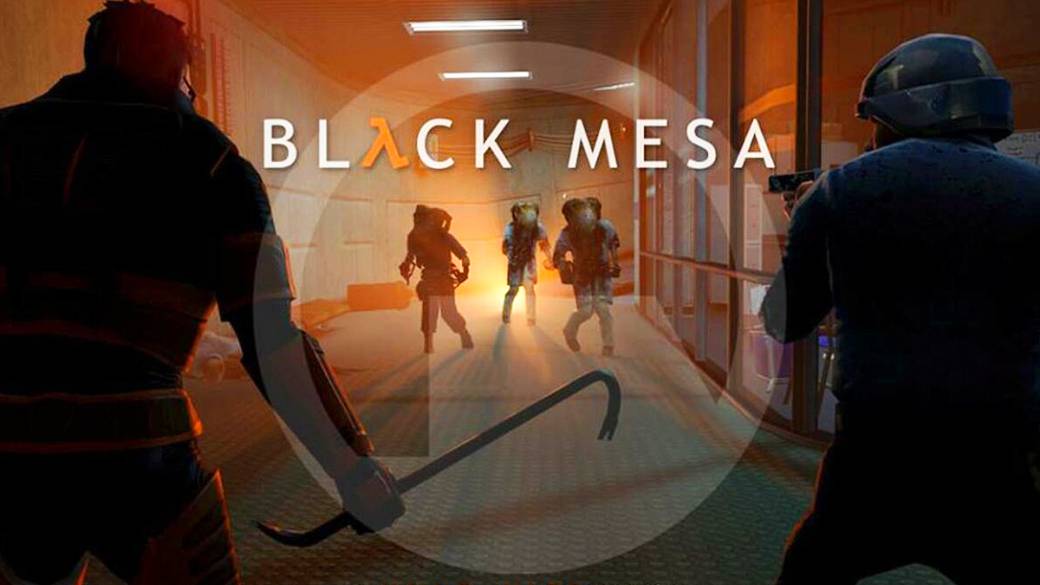
We analyze Black Mesa, the remake of one of the best and most influential video games in history, the unforgettable Half Life.
Year 1998. A year full of incredible releases within the videogame sector, being one of the main candidates for best year in the history of the medium. In those 12 months of incomparable joy for the world fan, we received endless releases of great quality. Capcom surprised us with a Resident Evil 2 that turned out to be a tremendous bombshell, just like his recent remake. Sega presented us with a final jewel for his dying Saturn with that wonder of the RPG that was Panzer Dragoon Saga, a masterpiece. Blizzard gave a total turnaround to one of the genres that hit the strongest in Pc, the real-time strategy, launching the colossal Starcraft, which would also mark many of the bases of what have ended up being electronic sports. The master Hideo Kojima shook the foundations of the sector with Metal Gear Solid, and LucasArts offered us a majestic swan song of the graphic adventure with Grim Fandango. Nintendo made our dreams come true by elevating the video game to its maximum expression with The Legend Of Zelda: Ocarina of Time. The lucky PC players received titles from the draft Fallout 2 and Baldur's Gate, odes to the best role with very different staging, or the superb Thief: The Dark Project, with names of the weight of Ken Levine or Warren Spector behind. And along with these and other titans, we receive dozens of capital titles that for reasons of space we must ignore, in a majestic year for the videogame sector. Highlighting in that year within the videogame sector was certainly not something that happened because of a shortage of quality exponents …
That 1998 of indelible memory also left us the opera prima of a virtually unknown developer, founded just two years earlier by a couple of former Microsoft employees, Mike Harrington and a Gabe Newell. How could it be otherwise in an era where the most popular genre of video games on PC was commonly referred to as "Doom-type games," Valve's first game, which was called the company of these good lords, would be a game of first person shots in the wave of id classics like the aforementioned Doom or Quake. Precisely a version of the latter would be used licensed by id, and that Valve customized to satiety to fit his pretensions to model his creature. In addition to the influences named, their creators mention Stephen King's novel "The Mist," or a chapter in the series "Beyond the Limit" ("The Outer Limits") entitled "The Borderland." After much struggle to find a distributor to launch his game, Mr. Newell's company was allied and nothing less than with the giant Sierra. On November 19, 1998, Valve launched Half Life, and the world of video games would never be the same again.
Half Life came to completely revolutionize the narrative within the genre of first-person shooting games in particular, and the medium in general. Valve's title fled completely from cinematic or prerecorded scenes to tell us his story, giving us at all times the control of our avatar so that we live entirely this incomparable science fiction epic through his eyes. It is true that several moments were written, but Valve's title knew how to camouflage it with mastery to immerse us in his world and make us feel that our actions really had an impact on him so that no title had been achieved before.
From its iconic introductory sequence aboard a monorail that immerses us in the facilities of the Black Mesa scientific research complex, completely in game and with full control of our character, we were aware that we were facing a new step in the way That video games told stories. Valve's masterpiece not only stayed there, it completely revolutionized the way it introduced puzzles in development, making it completely organic as part of the game's own environment and the advanced physics system used by the title. Unlike other titles of the genre, where to move forward we had to look for colored keys on the stage, here we had to find how to leave without power that cable that let a flooded area lethal, operate a nuclear reactor or simply search for the correct route in intricate facilities that raised the art of level design in a video game to another level. In the midst of this invasion of "Doom-type games" that we mentioned earlier, Half Life demonstrated in an incontestable way the possibilities of the genre to tell stories differently and to introduce a multitude of variants and layers to the gameplay beyond hitting shots. It is impossible to understand the future of the videogame sector since that far away 1998 without the capital influence that Valve's title had.
Today we are not here to talk about Half Life, but we have considered it necessary to remember the importance of this title in the face of this Black Mesa Reviews. And it is that the title that concerns us today is a sort of remake of the Valve classic, with the peculiarity of being initially developed by an amateur team of modders, who received official support from Valve when he saw the enormous quality of his work , allowing them to market it in their store. The seed of this release dates back to 2004, when Valve launched Half Life Source, the update of its game using the Half Life 2 engine. The results of that update did not please the community of followers, who expected much more from that launch .
Black Mesa was born from the merger of two amateur teams that started working separately in the Half Life version using the Source engine that they thought should have been launched by Valve. Upon realizing that their efforts were going in the same direction, they decided to merge, forming a team of 13 people to try to carry out their project. The fact of not being a professional company, and of not working together at the same meeting point, caused the project to be delayed. It would be on September 14, 2012 when the first version of the game would be released, totally free as a mod for Half Life 2. That version was a remake of all Half Life, except for the last 4 chapters that took place on the alien planet Xen
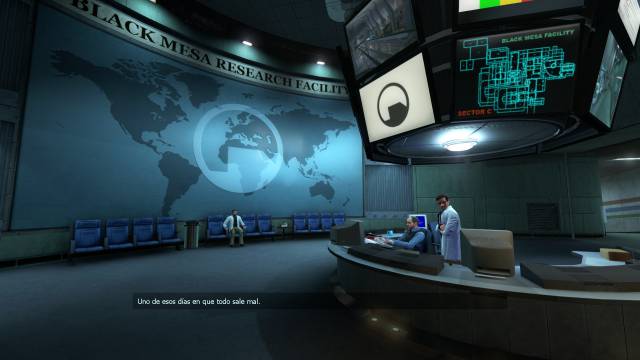
In view of the quality of the results achieved, Valve herself gives her full support to the project, making it an official product. After passing through the popular voting system for the publication of titles on the company's platform, the extinct Steam Greenlight system, Black Mesa officially goes on sale on said platform in the form of early access or “Early Access” in May 2015, still without the mentioned levels of Xen, but with the promise that these would be part of the final product once launched. This launch was initially scheduled for summer of 2017, but has been postponed several times until this past March 5 in which we can finally enjoy the final commercial version of this sovereign review of one of the best and most influential titles in The history of the video game.
So, here we have Black Mesa, which has ended up being much more than a simple visual update of the classic. And this is something that we appreciate, because before we begin to enumerate the many benefits of this title and how much we have liked and made us enjoy, we are going to make something clear: Black Mesa is graphically a title that seems rather of 6 years ago that something current. It is understandable considering that it was born as an amateur project and that it has been carried out by a small group of enthusiasts, being a project that was also born in 2012 and whose first commercial version dates from 2015. Once this is overcome, the good news comes , and they are many. Black Mesa is not limited to being a new layer of paint, it is a full-fledged reimagining, enormously respectful and faithful to the original material, but which in turn wide sections, edits upgradable areas, corrects things, adds a new dubbing work and a new spectacular dynamic soundtrack, along with many things here and there.
And we leave the best for last, because the good people of Crowbar Collective have turned the unquestionable weakness of the classic into something completely new and wonderful, expanding the experience to make it something spectacular just where it languished most in the original. In short, we are facing an update that has conquered us and has made us enjoy again a colossal science fiction epic full of exploration, shots and puzzles and that leaves us a multitude of unforgettable moments to remember.
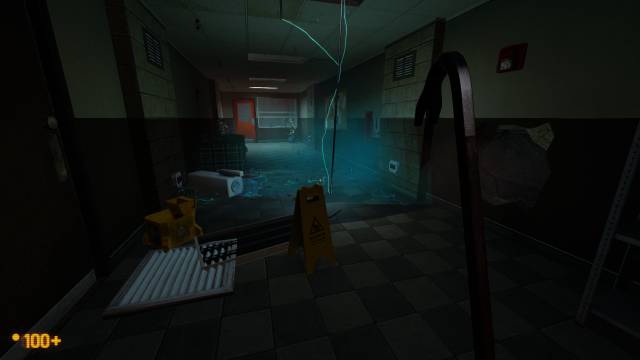
“The right man in the wrong place can change the course of the world. Wake up, Mr. Freeman. Wake up and look around ”
A mysterious man in Half Life 2.
My name is Freeman, Gordon Freeman
The epic narrated in Black Mesa begins as we accompany Dr. Gordon Freeman to his work in the scientific complex that gives its name to the title. The good man of Mr. Freeman, a man sparing in words for using a euphemism, is late for work, and after putting on his high-capacity protective suit, goes to his laboratory to run a complex experiment with a strange material of mysterious origin. During the experiment, something goes wrong, and throughout the complex a series of interdimensional portals begin to appear through which terrible and hostile beings of alien origin arrive. In case this is not enough, the government, always with pilgrim ideas, sends the army not only to contain the invasion, but also has the mission of "silencing" the scientists of the complex, beginning an indiscriminate killing. Thus, we are caught between two fires in a titanic epic for avoiding a catastrophe of even greater consequences.
As we have already mentioned, the immersion capacity of the title is absolute. It was revolutionary in the original at the time, and retains all its charm even today and is enhanced in this remake. And all this without cutting off the action or the control of our protagonist, weaving an atmosphere that immerses us completely in the events we see on the screen. With a wonderful rhythm, and a series of punctual scripts very well camouflaged and that do not seem such, it always gives the feeling that we really are the protagonists, and that our actions shape the world in which we move.
The variety of situations we face was another of the strengths of the classic, and here again it is present and improved. From some beginnings that flirt with survival horror in the first person, we move on to exploration sections and masterful puzzles, totally organic using the environment through which we move and the physics engine of the game. Once the relentless government forces make an appearance, we move on to frantic shooting sections, where we must take advantage of every advantage that the stage gives us, as well as a varied and effective arsenal that we must use wisely to get out of really hard shootings and where The strategy plays an important role. Stealth and infiltration will also have a small role in the development of the title. All these mechanics are interspersed, so that the game always stays fresh and varied, capturing our interest completely.
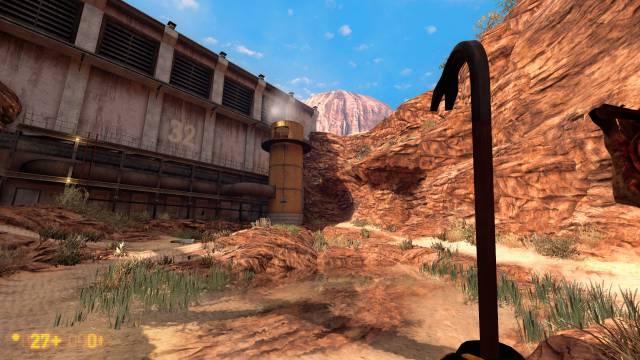
Improving the unbeatable
We have already commented that Black Mesa is much more than a mere Half Life face wash. Said face lift, except for the huge final surprise, is correct but it does not live up to what the great titles of today offer. Moreover, at times it seems a title of the previous generation. You can see the years and their amateur origin, despite which, it also shows a love, respect and knowledge of the original material that is worthy of praise. The true triumph of Black Mesa is the colossal work of reimagining the classic, creating this remake of zero completely respecting all that is Half Life. As we have already mentioned, there are several enlarged, improved and polished sections, and despite the fact that the graphic section was a lot of being a pointer, Black Mesa looks like never before and distills much more life than in the original. If you played Half Life at the time, everything will be familiar, but elevated to the nth power.

The redesign of certain levels is more than evident in chapters such as the eighth, "On Rails" ("On A Rail"), which in the original was a small toothache at times, and here it has become something more linear than It flows much more naturally and is much more enjoyable. In no case has the experience of the classic been simplified; on the contrary, it has been increased and given more depth. The duration of the chapters has increased, the puzzles work better and new puzzles have been introduced, and everything feels better integrated and more natural. In short, they are the same levels, but redone from scratch, increased and improved.
At the level of control, we have sensations very similar to those we felt in 98 at the controls of that tremendous reference, but in turn slightly retouched and with certain additions that bring it to a certain extent to current standards. The handling of the weapons is correct, its recreation has the appropriate forcefulness and is very enjoyable and effective. In the 90s complex maneuvers were fps in the fps, and Half Life made a generous use of the mechanics of crouch jumping. To avoid unnecessary headaches, Black Mesa by default enables an option that makes it automatic. The use of the Source engine represents a considerable improvement in terms of physics and control, leaving us with similar sensations as seen in Half Life 2, so the Black Mesa complex has never felt so alive and “reactive” to our actions as it happens here.
In the sound section we also have a huge improvement work. The dialogues have been re-recorded and a multitude of new lines have been added, reinforcing that feeling that Black Mesa oozes more life than ever. The soundtrack deserves point and apart. There are certain moments where it appears with such an out and epicity that it really manages to put our hair on end. On the other hand, on other occasions she knows how to be extremely emotional and evocative, like every good soundtrack of a huge science fiction work like this should be. Here the Spanish dubbing that we had at the time has been lost, although all the texts are translated into the Cervantes language.
Xen, from hell to paradise
Unquestionably, the worst part of Half Life was the last four chapters that took place in the alien world of Xen. Actually, they were a downturn and were not even at the same level as the rest of the game, being a kind of floating islands with some degrading textures in which we had to take a series of annoying jumps that were not very enjoyable and that tested more That would be our patience. It seemed clear that Valve had run out of time or the budget had gotten out of hand (or both), but in any case, those 4 levels of unfortunate memory meant a downturn with respect to the overall experience. After not making an appearance either in the free initial version or in the early access of Black Mesa, the development of these 4 levels has been the culprit of the enormous delay of more than 3 years in the launch of the title. Blessed has been the wait, because this reinvention that the Crowbar Collective team has done is simply and simply glorious, and offers us 4 spectacular levels, which happen to be directly from the best of the game. We really doubt that Valve herself would have done something better if she had undertaken the task of redoing her debatable original work with these levels.

From the first moment we set foot in Xen, we find an exuberant and inhospitable alien habitat that leaves us a multitude of unparalleled beauty imprints. Xen is now a coherent world, which overflows flora and fauna on all four sides, and which boasts a superb artistic direction that leaves us one of the most attractive and immersive alien environments we have visited in any game. The impact that the first moments in this reimagined Xen has left on our retinas is indelible, and has left us breathless. In case this is not enough, it is so full of elements that expand and reinforce the narrative of the title that really surprise us at every step. Bringing together this superb artistic direction, spectacular lighting, a masterful color palette, and an overflowing imagination, the staging of these four levels is overwhelming, and these elements combine so well that in these four levels it seems that we are facing a more current title at the visual level, resulting tremendously beautiful and spectacular.

Again, the improvement work does not remain in that huge leap at the visual and artistic level. The duration of this part has increased considerably, reaching its good four hours. Xen's initial exploration has been truffled by excellent environmental puzzles and a delicious exploration where we find the catastrophic results of previous human incursions. The second level of Xen, "The Gonarch's Hideout" ("Gonarch´s Lair"), has gone from being a tedious confrontation with the final boss to one of the best and most spectacular parts of the game, in a delicious game luck of the cat and mouse that leaves us several of the most shocking and frantic moments of the adventure. "Interloper" is now a masterful level that shows us the hardships and technology of this hostile alien environment, and that also leaves us several moments to remember and a good portion of meticulous puzzles. The final battle has not undergone many modifications, although it does have variations and is less heavy than in the original.
In short, this Xen has conquered us, and not only has it become the climax that deserved one of the best video games in history, it has become one of our favorite parts of the adventure, colossal at all times and which leaves us one of the most beautiful and attractive alien worlds in the sector. An end to the top of an unforgettable and spectacular single-player campaign that will make us enjoy its good 20-24 hours and that continues to show today why the classic on which it is based is considered one of the best and most influential video games of the history. Fun, varied, challenging and knowing how to narrate an epic science fiction adventure as only this special medium can do, maximizing the use of its tricks masterfully, the Black Mesa campaign is a wonder that will inevitably trap us from beginning to end.
Essential for both those who never played it and for those who enjoyed it at the time, even those more conservative veterans who renounce the modifications of their classic idolized, and who only to contemplate the wonder that these people have achieved with the levels of Xen will see his approach to this reinvention of the classic rewarded. And all this, at a more than tight price of 17.99 euros, doing well what those who really knew about this in the crazy 90 said: "Never pay more than 20 turkeys for a video game."
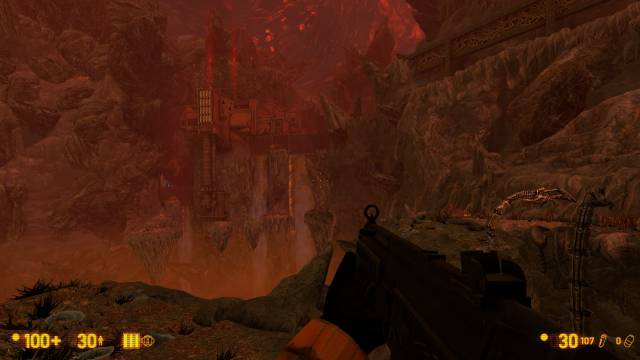
CONCLUSION
Black Mesa is the best way to play one of the best and most influential video games in history, that superb Half Life that marked the direction of the sector in the late 90's. The merit of what it achieves is enormous, considering its amateur origin as a mod of Half Life 2. The official support from Valve herself would not have come if the quality of the product was not up to par, but this final version has exceeded our expectations. Under a visual face wash that falls short for the times, we have a masterful reinvention of the classic, expanded, improved and polished to offer an unforgettable experience. Black Mesa is a superb first-person shooter that offers us a science fiction adventure full of spectacular and epic moments, and that knows how to constantly be introducing varied and different elements in its playable proposal, with shootings, puzzles and exploration always keeping the attractive development and catching us completely. His masterful narrative, revolutionary in his time and fully in force today, boasts the best benefits of the medium to tell us his story completely in game without having to interrupt the development with prerecorded scenes. And to top it off, the final part of Half Life, more than disappointing at the time, has been completely redone and expanded to offer us 4 glorious levels in an incomparable and beautiful alien world that we can never forget. There is nothing more to say, one of the best video games in history in its best version.
THE BEST
- Huge remake of one of the best video games in history, which expands and improves impeccably.
- It offers a colossal science fiction adventure lasting more than generous, epic, varied and hilarious full of unforgettable moments.
- Perfect balance between exploration, puzzles and shootings.
- The four levels of Xen have been completely redone to become a sovereign wonder that offers one of the most beautiful and immersive alien environments we have visited in any video game.
WORST
- On a visual level, it is far from current standards.
Excellent
A benchmark title in its genre, which stands out above its competitors and that you will enjoy from beginning to end, surely several times. A game destined to become a classic over the years.
